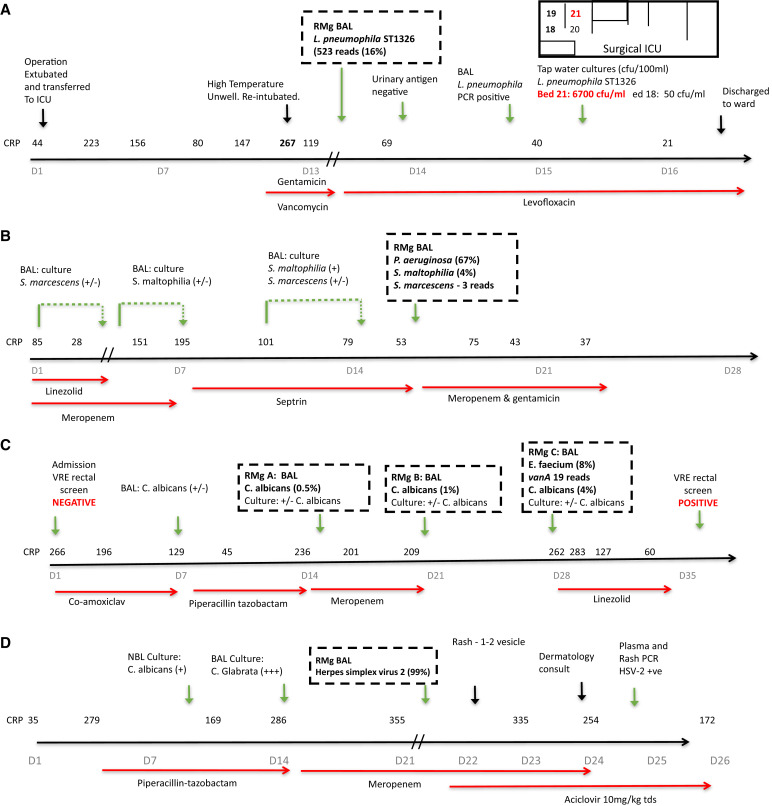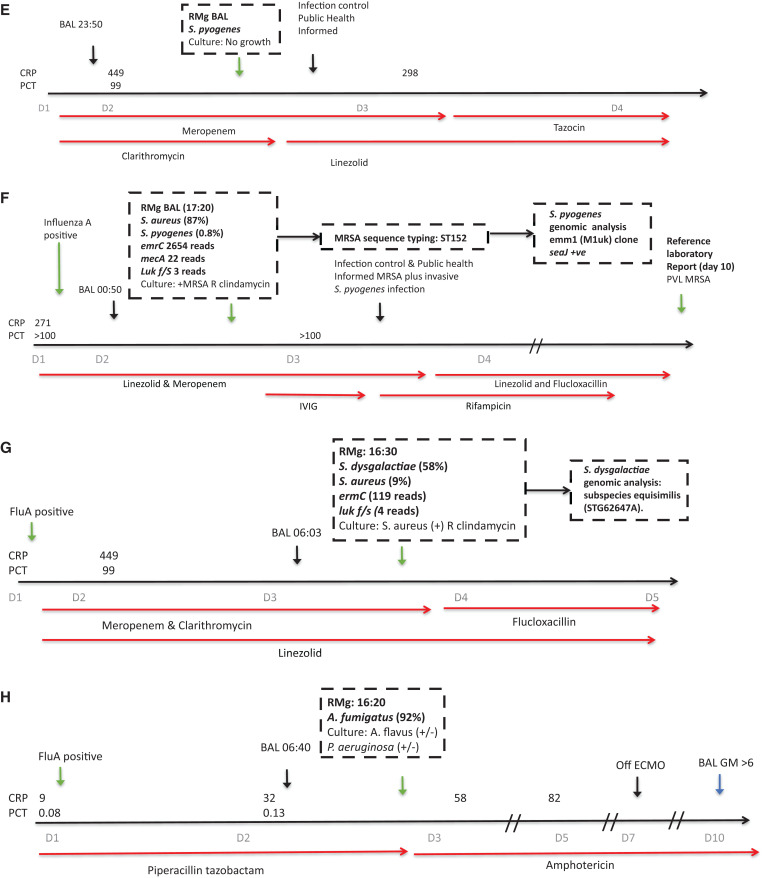Figure 2.
Patient ICU timelines illustrating the integration of RMg results into antimicrobial treatment and infection control decisions. Hospital-acquired lower respiratory tract infection (LRTI): (A) ICU-acquired L. pneumophila ST1326 pneumonia. Unexpected bacteria prompting antibiotic escalation, infection control, and public health interventions. (B) P. aeruginosa ventilator-associated pneumonia (VAP)–LRTI. New bacterial pathogen in patient with severe COVID-19 pneumonitis prompting antibiotic escalation. (C) ICU-acquired vancomycin-resistant E. faecium. Unexpected antimicrobial resistance (AMR) bacteria with patient and infection control impact. (D) Unexpected disseminated reactivation of herpes simplex virus 2 (HSV-2). Community-acquired LRTI: (E) Influenza with secondary S. pyogenes infection. (F) Influenza with secondary Panton–Valentine leukocidin and methicillin-resistant S. aureus (PVL-MRSA) and S. pyogenes infection. (G) Influenza with secondary PVL and methicillin-sensitive S. aureus (PVL-MSSA) and S. dysgalactiae infection. (H) Influenza with secondary invasive aspergillosis prompting urgent treatment. The details of each case are presented in the online supplement. CRP = C-reactive protein; CFU = colony-forming unit; D = day.


